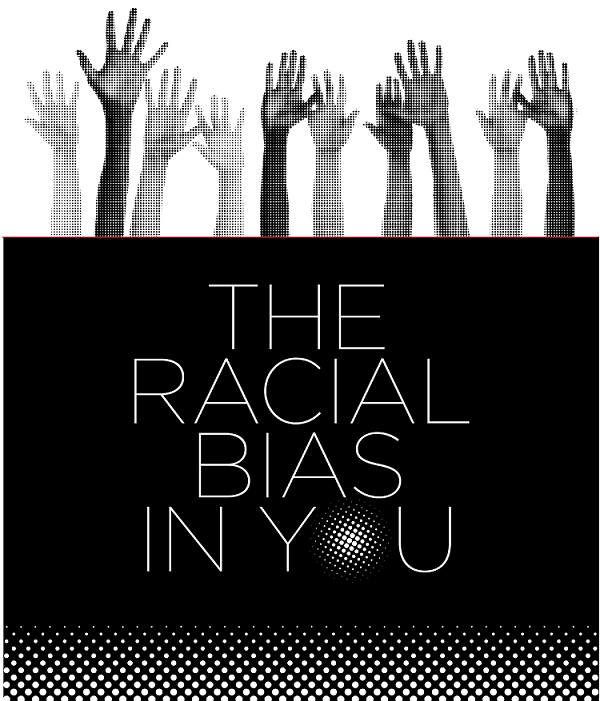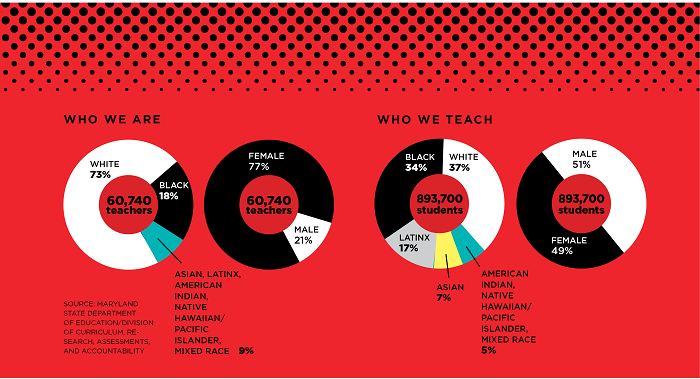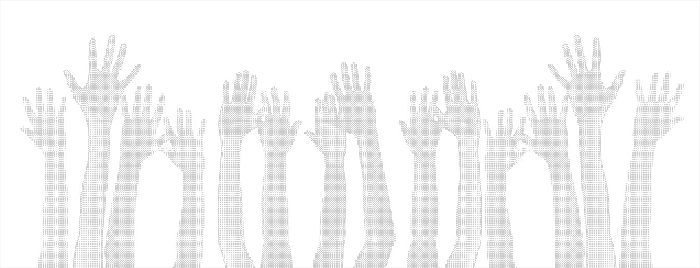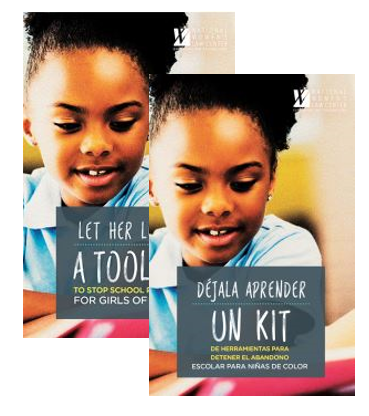The Racial Bias in You
Educators can play critical roles in breaking down biases at all levels.

Personal racial bias comes in so many forms that it feels almost too overwhelming — and complicated — to talk about. For educators it means unambiguously confronting personal obstacles to reaching and teaching every student. It means having the often painful and painfully honest conversations with yourself and your colleagues to discover and realize that deeply rooted biases indeed exist, no matter how unconscious we are of them. And no matter how hard the conversations are, no one should feel blame or shame in having them — everyone has bias.
For students, these biases make up much of what they encounter in their daily lives. There’s the story of middle school boys who risk discipline rather than take their hat off to expose their hair half-braided; the high school girl sent home because an on-trend fashion that many girls were wearing was fitting too closely to her curvy body; or the new Central American student placed in all lower level classes because their lack of English-speaking capability was assumed to reflect a lack of overall academic capability.

These are Black and Brown students held to scrutiny by cultural norms or stereotypes that don’t fit their culture. The expectations for these students is both too low and too high for them to get the supports they need and that is related directly to the biases they face. Breaking through the stereotypes and accepting the need for culturally relevant teaching is part of the conversation of course. But educators are looking for guidance, much of which comes from defining the language of bias.
The Perception Institute says implicit bias is the brain’s automatic, instantaneous association of stereotypes and attitudes with particular groups — a social phenomenon unrelated to an individual’s psychology. Implicit bias is not one’s politics, values, or ideals; it is a social conditioning based on one’s upbringing, heritage, possible fear of the unfamiliar, and repeated exposure to the way certain groups are represented in the media and popular culture.
In schools, this plays out in pre-K–12 discipline in everything from behavior to clothing; access to gifted programs and STEM and advanced level classes at all levels; and in the self-confidence and self-image of the students themselves.
Confronting fear Nitzalis Rivera, an English language educator in Washington County, says fear is the single largest barrier to educators connecting with Black and Brown families — it stops progress before it can get started. “Educators consider themselves to be smart people. But in the case of cultural differences with families of color, there is fear — ‘I just don’t know how to do this.’”
Rivera tells the story of a pre-school teacher who gave up her fear of the unknown and made no assumptions about the children or their families. She allowed all the Spanish-speaking students to talk in their language, to get comfortable, to enjoy their experience. She did the same with parents using the little Spanish she knew to make an effort to communicate. She built relationships and everything followed.
“The reality,” Rivera said, “is we came into the field to teach kids. That’s the core of our responsibility. And when you think of it that way, everything makes sense.”
An interview with Monique Morris on Black girls, school discipline, implicit bias, and what educators can do.mseanewsfeed.com

Building Empathy around Cultural Differences
Robin McNair is a veteran classroom teacher and now Restorative Practices Coordinator in Prince George’s County. In her educator trainings and interactions with students, she works with groups to find common ground and build empathy for one another. “Having open and safe discussions around race and racism puts everything out in the open for each perspective to be viewed and for walls to come down,” McNair said. “This type of exercise really allows others to see how students of color vieweveryday issues through a different lens.
Talking with José Vilson about transformational conversations, boostrapping, national schools, and more.mseanewsfeed.com
“I take time to allow educators to share how their cultural heritage played a big role in their lives. Then we think of our students and the similar role their different, but equally as valued and important, cultural heritage, values, and upbringing must play in their lives.” That exercise alone — a small study in empathetic understanding — is eye-opening.
Kids naturally want to be a part of something — to have playmates, to be accepted for who they are, to join clubs, to achieve, but the weight of cultural bias on students is heavy and the effects of it play out in statistics that have been exposed recently by a number of groups and publications. According to the National Black Women’s Justice Institute, which studied racial disparity among girls in 2017, Black girls are 5.5 times more likely than White girls to be suspended from school, and 4 times more likely to be arrested at school.
Yet, In the National Women’s Law Center’s 2017 report Let Her Learn: Stopping School Pushout for Girls of Color, girls of color reported an eagerness to learn, graduate, and attend college and they want help to do it.

Biases reveal themselves in ways that pervasively undercut and alienate students of color from school. There’s the economic bias of treating students of low socio-economic status differently by having lower expectations than students from middle- or upper-class families.
The gender and race bias that calls out Black girls for “being loud” or “unlady-like” or for hair or clothing that doesn’t fit the cultural norms of the rule- and policy-makers.
Rules about hair are a good example of what happens when policies and rules completely ignore African-American culture. “In Prince George’s County, most girls can’t just brush their hair and go and many young ladies wear braids,” McNair said.
“If they are between getting their hair done, they will wear a scarf until they do.” Similar cultural deafness can be seen when LGBTQ students are forced into assigned-gender restrooms, or when homeless students are outed, or a parent is deemed uninterested when they are simply afraid of being looked down upon by other parents or educators.
The American Civil Liberties Union of Massachusetts has filed a complaint against Malden’s Mystic Valley Regional…www.theroot.com
A middle school counselor says a rule that kids can’t wear hats in school is based on a safety concern, but when boys haven’t been to the barber they want to wear a hat. They often choose to be called to the office as punishment rather than be subjected to the teasing of other kids. “Taking the time to see the kid behind the choice rather than just the choice is something I wish all educators would do.”
From Micro to Macro — Individual to Institution
Implicit bias doesn’t exist simply in individual decisions and relationships. The sum total of our biases shape school culture and institutional policies that can reinforce — or challenge — ingrained or unconscious biases. Educators can play incredibly important roles in breaking down those biases — whether it’s at the micro level of self-examination, the interpersonal level of building relationships with students and families of different backgrounds, the school level of having tough conversations about school culture, or the institutional level of systematic policies that can reinforce or condone bias. Schools and communities have the power to come together and discover what they stand for, what and who they value, and how far they will go to build the kind of trust Nitzalis Rivera talks about.
It’s often said that education is the great equalizer. We want that to be true. But the truth is it’s not equalizing for every kid and biases — especially those reflected in our institutions — often get in the way. We can break down barriers, but it will take hard work and hard conversations. The fact is, kids want to learn and can learn — no matter what their hair looks like from one day to the next. They need a helping hand, and that’s up to us.

